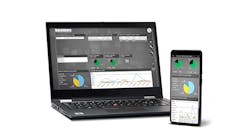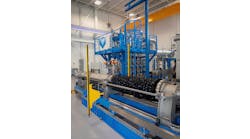Even though the COVID-19 pandemic will reduce the proliferation of machine-to-machine (M2M) devices in 2020, it will fuel demand for testing equipment that validates performance and a growth rebound in 2021, according to recent analysis by Frost & Sullivan (ww2.frost.com). Its report, "Growth Opportunities in Test and Measurement in the IoT Market," projects test and measurement equipment revenue will ultimately expanding at a 5.1%compound annual growth rate (CAGR) from $2.4 billion in 2019 to $3.25 billion by 2025.
“5G development for IoT use cases will continue to be important during the pandemic. Given the complex nature of its deployment, there would be a requirement for software-based testing solutions that can test virtualized 5G network slices as well as test broad frequency spectrums,” says Rohan Joy Thomas, measurement and instrumentation industry analyst at Frost & Sullivan. “Going forward, understanding the performance of proprietary applications on connected devices outside the enterprise secure network infrastructure is a key challenge that test and measurement companies need to resolve.
“Of all the IoT applications, test and measurement solutions that are used to test M2M, applications in the connected home environment are the most dominant, representing 45.7% of all IoT test applications. As the healthcare sector plays a crucial role in combating COVID-19, test and measurement solutions used for connected health applications will experience the highest CAGR of all applications over the forecast period.”
The proliferation of IoT across industries has presented immense growth opportunities for market participants involved in the IoT test and measurement space, so Frost & Sullivan recommends that they:
Develop solutions that can test high-speed Ethernet interfaces as well as physical entities;
Provide over-the-air testing solutions that can test sub-6 gigahertz as well as higher millimeter wave applications;
Introduce enhanced software testing capabilities along with artificial intelligence, machine learning, and cybersecurity to enhance the portfolio; and
Provide solutions that can regulate the consumption of energy from connected devices operating at narrowband frequencies and low energy levels, thereby increasing the device's longevity.



